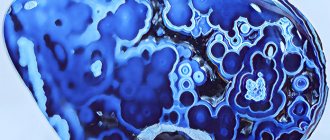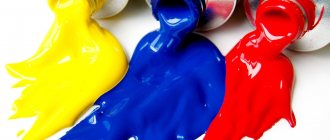You can either love pink or hate it, there is no third option. Some people consider it the color of love, others - vulgarity, frivolity and immaturity. Both are right. The psychology of flowers is a very interesting area that can tell a lot about a person. What does the color pink mean in psychology and its symbolism will be discussed further.
According to the meaning of the color pink in psychology, it helps in times of disappointment and stress. This shade is a wonderful antidepressant that removes blues, melancholy and instills faith in a better future. Look at it more often if you want to get rid of the burden of past relationships, long-standing grievances, ballast that pulls you down. It sets you up for creating a positive future.
What does it mean
Let's start with the fact that the tone is based on a mixture of red and white (with a possible admixture of lilac, orange, gray). The combination itself is unobtrusive, non-aggressive, with minimal emotionality. It can be warm and gentle or colder and intense, but in most cases it awakens positive emotions. I classify this color as one of the group of antidepressant colors that can evoke thoughts of cloudless happiness.
In 2021, the term Millennial pink appeared - a color statement and a symbol of progressive youth. And by 2021, “pinkness” began to play a big role in the formation of women’s solidarity movements: it became a sign of courage, a desire to affirm the position of femininity in society, and a protest against life according to male rules. These trends, of course, affected fashion and the wide distribution of pink-peach variations in the modern world.
What does it symbolize
This color scheme is considered feminine. Another stereotype connects it with childhood and associates it with immaturity and youth. In fact, both soft pink and its brighter equivalents have broad symbolism, which is why adults and serious people need not avoid these colors in their wardrobe or when decorating their premises.
In Ancient Rome, peach and cherry shades were associated with the goddess of love and beauty, Venus. Representatives of Eastern countries also valued them, using them in meditation to relax and improve concentration.
Other meanings:
- freshness;
- birth;
- carefree childhood;
- youth;
- update;
- romance;
- tenderness;
- femininity;
- calm;
- tranquility;
- white – freedom, purity;
- red – action, passion;
- spring;
- beauty;
- sentimentality;
- demonstrativeness;
- >attention deficit;
- desire to be noticed;
- stubbornness;
- sociability and friendliness;
- daydreaming;
- detachment from reality;
- naivety.
Pink has become firmly entrenched in our culture, accompanying different social experiences at different times. Since childhood, girls have been surrounded by this color, presenting it as a kind of reflection of their gender. Therefore, many men hide their affection for this tone so as not to cause public condemnation.
Why can pink be called a masculine shade?
It is believed that red and its shades are a feminine color, and blue is a masculine color. This opinion is outdated. Five reasons why men should wear pink:
- In some countries, the color pink symbolized people belonging to the class of workers and servants. And this was the only reason why he became an object of ridicule in the twenties of the last century.
- Some time ago, babies were dressed in white, but for babies under one year old it is difficult to determine whether it is a boy or a girl. Then they came up with the idea of adding two colors: blue and pink. Initially, the symbol of the female color was blue, this is the color of the Virgin Mary. Pink was related to red and was associated with men and war.
- People around you associate you not by the color of your clothes, but by your figure and external features.
- Red is the color of strength and power, and pink is its spectrum.
- Previously, it was considered a color without restrictions.
Use pink and its shades to express your uniqueness and stand out from the crowd of black and white shirts.
Properties
In color therapy, pink is used if:
- it is necessary to create conditions for rest from mental work;
- it is necessary to resolve any conflict;
- it is important to give the room a romantic, festive atmosphere, lift the spirits of those present, and diversify the design with charming flowers;
- eliminate aggression, calm down, normalize the nervous system;
- make it easier for night owl type people who find it extremely difficult to get up in the morning.
Psychological impact
Mixing red and white has a beneficial effect on mental activity, stimulating thinking and concentration. This is a symbol of tenderness. With its help, you can establish a romantic relationship with your chosen one. Passion and sensuality are slightly softened by purity and lightness: the desire to become more affectionate, warmer, more caring awakens in the beloved. Trusting communication is established and barriers are eliminated.
Psychologist Daria Milai
Make an appointment
For girls who have not yet met their soulmate, I recommend wearing quartz, morganite, and rubellite to create a feminine and seductive look.
Symbolism
- Identified with the arrival of spring, with new life, with beginnings.
- It is compared to the wings of a butterfly.
- If we consider the ancient Romans, they associated it with Venus, who was the Goddess of beauty and love.
- It is a symbol of childish simplicity and sentimentality.
- The phrase “pink dreams” describes desires that will never be fulfilled because they are so different from reality.
What can you say about a person who likes this shade?
Lovers of tender pink are kind and do not accept violence, and tend to immerse themselves in fantasies. At the same time, they are fickle, emotional, and easily hurt and offended.
An excessive amount of this color around indicates some immaturity and lack of independence, but at the same time excessive self-confidence or even narcissism.
He endows girls with an aura of femininity and tenderness. You want to protect such women and surround them with care.
Pink is also associated with talent, creativity, and originality. As a rule, it is liked by hardworking and purposeful people who radiate positivity and determination.
Love for the delicate shade of an orchid demonstrates bright individuality and the desire to get everything at once, stubbornness; to red-violet - delicacy, confidence and at the same time the desire to return to the past to correct it. Paler variations speak of the romantic nature, rich variations speak of passion.
However, in both cases we are talking about an unwillingness to accept reality.
Who else likes this color:
- those who do not accept rigidity in any of its manifestations;
- sociable individuals (extroverts);
- people with excessive self-confidence.
Color aversion
If a person does not like the color pink, this indicates the following problems:
- excessive temper and irritability;
- conservatism;
- emotional and physical fatigue;
- severity, pragmatism, denial of the romantic component in relationships;
- a person does nothing spontaneously, his actions are carefully planned;
- secrecy and reluctance to show even positive emotions;
- difficulties in showing care and love towards family and partner.
Who can I recommend?
Pink will be an excellent companion for young, fragile girls. It will highlight their sincerity, youth and lightness. Delicate shades are recommended for blondes, and deeper, richer and darker shades are recommended for brunettes and brown-haired women.
Based on the symbolism of the Zodiac signs, the pinkish color accompanies the elements of fire and air, that is, it will have a beneficial effect on Sagittarius, Aries, Leo, Libra, Gemini and Aquarius.
Health effects
Pink color makes you relax
- Despite the fact that pink is quite rich and bright, it helps to relax and calms a person’s psychological state.
- If there is a syndrome of obsessive thoughts, this color also has a beneficial effect on getting rid of them.
- If you have depression or asthenia, experts recommend surrounding yourself with pink objects. That is, at a time when a person is in an exhausted state, his resources and energy are at a low level.
- Helps strengthen the immune system and normalize the functioning of the nervous system.
- It turns out to be effective in the presence of headaches.
- Helps resist ear and eye diseases.
- Has a beneficial effect on the endocrine system.
Cloth
This color was first at the peak of popularity in the 30s of the 20th century. To this day, designers combine it with various colors, adding brightness and freshness to everyday, festive and business wardrobes.
The tone is considered summer. It is ideal for walks in nature, a romantic date. It goes especially well with green, black, white, purple, silver and gold.
Combinations
Bright pink-red variations are rarely used in everyday life, since this combination is considered scandalous and not the easiest to perceive. The tandem with orange is juicy and unusual. It makes a special impression when playing contrasts: a combination of warm and cold tones.
The pink and yellow duet is soft and positive. It allows you to express femininity, summer carefreeness, a positive attitude, and openness to the world. It’s also nice to combine with warm or cool green. Some degree of contrast reflects energy, inspiration, freshness and exoticism.
A pair with blue is cool, but filled with harmony. It allows you to relax psychologically and tune into the search for inner balance. The combination with purple creates a sensual, mysterious, rich palette. An excellent option for evening wear.
Brown will be an excellent background for pink, making it softer and more neutral. Gray will bring the same note of calm. Therefore, these variations are quite appropriate in business attire.
When choosing the option that suits you, it is important to focus on the color type of appearance:
- “Spring” people should take a closer look at salmon.
- “Summer” - to the delicate, reddish, grayish, color of a withered rose.
- “Autumn” – to brownish.
- “Winter” - to icy variations, bright, fuchsia.
Women's clothing
Pink lingerie allows you to tune in to romance and undoubtedly attracts men. A girl of any age can wear clothes of this color scheme. It is only important to choose the right shade: warm pastels are suitable for owners of peach or golden skin, and brighter options are suitable for transparent and pale skin.
Saturated, catchy tones are not appropriate in cold weather. In autumn and winter, you should give preference to calm, gentle or dark variations. For a business meeting, the best option would be a duet with gray (otherwise you can leave the impression of a frivolous person). Moderation is important in everything, so an excessive amount of pink can create a vulgar, vulgar or too childish image.
Men's
Men choose this seemingly exclusively feminine color for:
- shirts;
- summer T-shirts;
- jacket;
- costumes (especially relevant for adherents of public professions: showmen, singers, actors, dancers).
With the help of a successful combination of shades, you can create a harmonious image of a romantic, self-confident person. Muted, pastel colors will fit perfectly into the wardrobe of the stronger sex.
Why can this color scheme be called masculine?
The position associated with the gender division of colors (red for women, blue for men) has long been outdated.
- In a number of states in the 19th-20th centuries, pink was a symbol of the working class.
- Initially, blue was associated with femininity, symbolizing the purity of the Virgin Mary. Red-pink variations were associated with war.
- The colors allow you to express your uniqueness and stand out from the crowd of gray and black suits and shirts.
Origins
The name of the color comes from the name of the rose hip flower: it is a plant from the Rosaceae family. Its buds have a delicate shade. The English word “pink” also means a common shade of pink. This word appeared thanks to the verb “to pink”, meaning to give the fabric a figured edge, like a carnation petal.
It is worth noting that color perception in psychology is a rather controversial topic. It's all about differences in perception.
Interestingly, the Yele Dnie (Papua New Guinea) and Piraha (Amazon) languages do not have such a word at all - color
This does not mean that people who speak these languages are color blind. Physiologically, their organs of vision are no different from any others. Papuans describe colors in metaphorical categories or through surrounding objects.
In some cultures (for example, Hadza, Tanzania) there are only symbols of black, white and red; Tanzanians simply do not need the rest. But with the complication of the sociocultural system, new designations for colors and their shades appear. Therefore, the name pink, as not the most basic color in the world’s palette, appeared quite late - the first mentions can be traced in the Odyssey, created in the 8th century BC.
In general, pink is quite widely represented in nature:
Without exception, all sunsets and sunrises are accompanied by a spill of red and orange hues across the sky. This happens because the sun's rays need to travel a much greater distance to the ground than when the sun is at its zenith. Because of this, short-wavelength colors of light, such as blue and green, are scattered on their way to our eyes. We can only observe colors with a long wavelength of light, and these are red shades.
The meat turns pink when cooked. The fact is that the protein myoglobin, contained in animal tissues, is red. But during cooking it begins to oxidize, the meat turns pink, brown, and in some cases even turns white.
The meat of some delicious aquatic inhabitants, such as shrimp, crabs, and salmon, is pink in color due to the presence of the pigment astaxanthin.
Roses, sakura flowers, and raspberries contain the natural dye anthocyanin. Of course, plants developed this property for a reason: by doing this, they attract pollinators, and in the case of berries, they ensure the colonization of new territories. For example, a bear that eats a berry will leave its seeds in a completely different place.
Some stones, precious and not so precious. For example, quartz, sapphire, topaz, jade, opal. There are entire pink beaches in the Bahamas, Greece, Italy and Indonesia. Some of them acquired this color due to crumbled shells of marine life.
Interior
A soft pink tone is used in interior design:
- In the bedroom for a little girl, to give the room a childish lightness, happiness, serenity and a feeling of security and care.
- In the office - using pastel solutions, you can improve productivity, get rid of unnecessary emotions, nervousness, and focus on the task.
- An excessive number of bright objects in one location contributes to increased anxiety, so it is more appropriate to dilute them with white.
- An excellent option for a small space - it will visually expand it.
- A teenage girl will also appreciate this style if she is characterized by lightness, dreaminess, and adventurism.
- It is not advisable to decorate a bedroom in this color, as it can irritate men - it is better to stick to muted shades of burgundy in combination with white and gold.
- A pink and blue tandem is perfect for the bathroom.
Use in advertising and business
One of the most in-demand professions of our time is a marketer. Thanks to them, a person chooses one product and avoids another.
According to psychological studies, about 60% of advertising success depends on the color scheme
Pink is actively used by marketers as a powerful tool. Very often advertising of women's products, and the products themselves, have this color. It is popular for underwear and cosmetics packaging.
Its use in children's products is no less popular. Dolls, houses, strollers, soft toys, even chewing gum are made pink. It is associated with a sweet taste, which is why sweets are also often pink in color or packaged accordingly.
Now a negative marketing and then political phenomenon has received publicity - pinkwashing.
Originally, the term meant a PR strategy by unscrupulous companies that exploited a disease—breast cancer—to promote their products and distract attention from the shortcomings of their brand. In fact, marketers were simply looking for profit, profiting from the grief of sick people. The pink ribbon is a symbol of the fight against breast cancer and gives part of the name to this strategy.
Subsequently, the term came to be applied to political and social events that involved diverting attention from real problems and covering up ignoble acts with gestures of goodwill.
Negative characteristic
The tone also has negative properties that affect the character of its lovers:
- frivolity, superficiality of assessment;
- excessive sentimentality, frequent mood swings and emotionality;
- the desire to constantly show your emotions.
However, all these qualities are ambiguous: in each of them you can find certain advantages and benefit from them. And even representatives of the stronger sex sometimes need to let themselves go and allow themselves a little more sensuality. Combining with pastel elements will help with this.
Ask a question
Everything is good in moderation, so excessive “pinkness” can really have a negative impact on the psyche, mood, and brain activity. You shouldn’t rush headlong into the pool and surround yourself with bright crimson objects. Find the combination that will evoke a feeling of peace, tranquility and add some fresh colors to the picture of your everyday life.
Significance in psychology
The first person to think about the perception of colors by the human psyche was Johann Wolfgang von Goethe, a German philosopher and writer. His work “Towards a Theory of Color” was not supported by research, but represented intuitive guesses. At that time (1810) it was not possible to prove differences in the perception of color, and a number of physicists rejected the work. However, the essay had an impact on painting: Philip Otto Runge, William Turner, the Pre-Raphaelites, Kandinsky wrote works influenced by Goethe's theory.
The topic was developed more than 100 years later in the works of Kurt Goldstein.
Goldstein's theory boils down to the fact that colors with a short wavelength (so-called “cool colors”) and with a long wavelength (“warm”) have different effects on the psyche. However, this has not yet been proven
In practice, the influence of pink on the psyche comes down to the fact that this color is sedative, that is, it calms and relaxes. It dulls emotional activity and temporarily softens an angry character.
This knowledge is used to achieve certain goals. Thus, walls in correctional institutions are painted in a similar way to reduce the aggressiveness of difficult teenagers and to prevent suicide.
For men
Men under the influence of pink color therapy become less aggressive and more calm. This is a great way to relieve stress and get in the mood for relaxation. This color evokes peace and helps you fall asleep quickly.
In 1979, a study by Alexander Schauss was published, which stated that when a person observes pink, the rate of heartbeat, breathing and pulse decreases. Based on Luscher's research, he created the following hypothesis: when exposed to pink color therapy, involuntary muscle relaxation is observed. The experiment was carried out in a Seattle prison. For 156 days, newly arrived prisoners lived in pink walls. During this period, not a single case of aggressive behavior of men was recorded. The color was named in honor of two prison officers who contributed to science.











